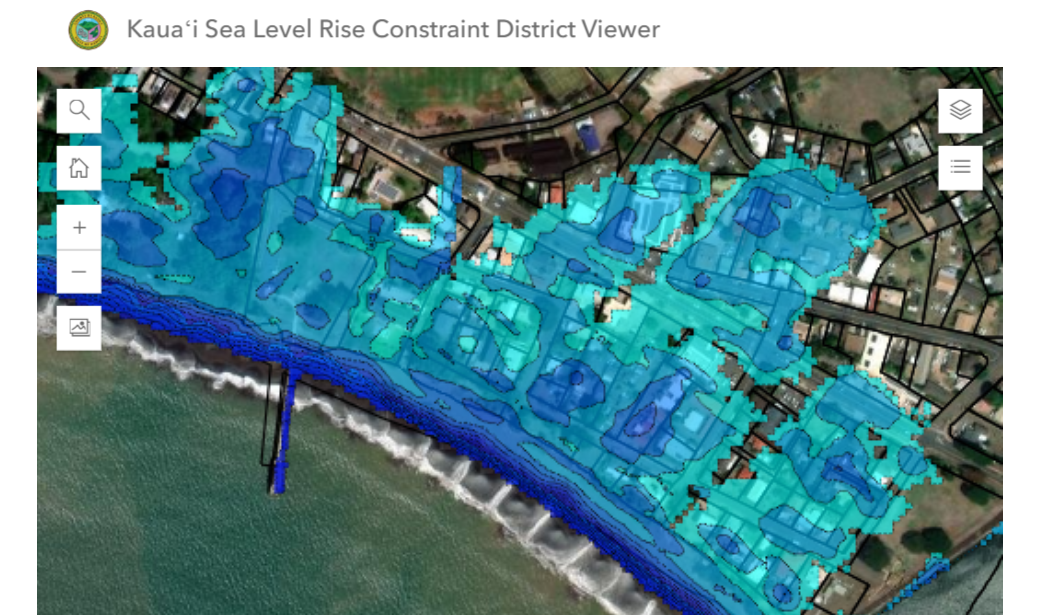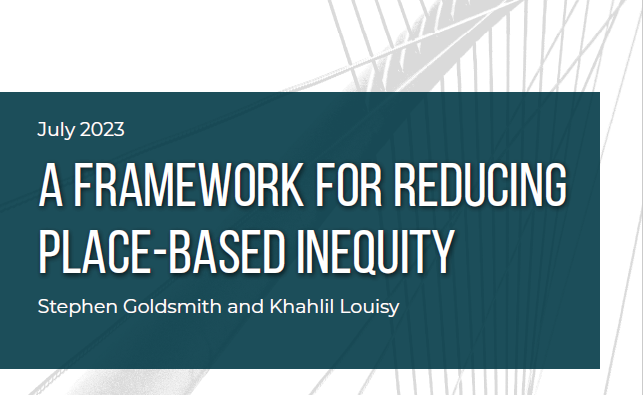- June 25, 2018
- Data Visualization
Based on an analysis of more than 52,000 criminal homicides and subsequent arrests over the past decade from the fifty largest cities in the U.S., the Washington Post’s ‘Murder with Impunity’ map and database highlight urban areas “where murder is common but arrests are rare.”
The Post’s new data visualization produces maps in a variety of formats, such as maps that differentiate between homicide cases with arrests (blue) and cases with no arrests made (orange). See below.

The Post also created visualizations that aggregate criminal homicide case and arrest data, providing a color-coded map highlighting general areas where there is a concentration of low homicide arrest rates (in orange) and areas with high homicide arrest rates (in blue). See below.

These high and low arrest zones can be viewed at the city-level or, as in the below, at the street-level with geo-tagged indicators noting the date of the crime, clearance status, and the name, age, and race of the victim. Additionally, analytics charts accompany the visualization providing further information about the clearance rates, homicide rate in each city, and the rate of arrest organized by the race of the victim.

 The visualizations also allow for inter-city comparisons based on the concentration of those high or low arrest areas. In the below map, the Post has identified communities at the extremes of their analysis—cities with mostly low-arrest areas, mostly high-arrest areas, and those that have scattered arrest patterns. The Post notes, “Some cities, such as Baltimore and Chicago, solve so few homicides that vast areas stretching for miles experience hundreds of homicides with virtually no arrests. In other places, such as Atlanta, police manage to make arrests in a majority of homicides—even those that occur in the city’s most violent areas.”
The visualizations also allow for inter-city comparisons based on the concentration of those high or low arrest areas. In the below map, the Post has identified communities at the extremes of their analysis—cities with mostly low-arrest areas, mostly high-arrest areas, and those that have scattered arrest patterns. The Post notes, “Some cities, such as Baltimore and Chicago, solve so few homicides that vast areas stretching for miles experience hundreds of homicides with virtually no arrests. In other places, such as Atlanta, police manage to make arrests in a majority of homicides—even those that occur in the city’s most violent areas.”

NEW DATASETS, NEW INSIGHTS
From a policymaking perspective, this is a helpful way to view and assess city safety and public safety performance as drilling down on the comparative contributing factors, administrative similarities or differences within these cities, the socio-economic profile of these areas of high or low concentration, and so on can reveal insightful trends or areas of need.
The dataset and visualizations developed by the Post were constructed based on FBI homicide and clearance data, local police department data, and other sources, and provide a new view of criminal homicides and arrest rates in 50 of the largest cities in the U.S. The dataset for this project is available on the Post’s site as well as via GitHub.
Clearance data is an important, distinguishing facet of this project. A case is considered ‘cleared’ when a charge is made, and for homicides that typically means an arrest of the perpetrator. The FBI’s Uniform Crime Report (UCR) publishes homicide clearance rates, which are calculated by dividing the number of cases cleared by the total number of crimes. Clearance rates reflect recorded crimes only, and, it is important to note that fewer than half of crimes in America are reported, and fewer than half of those reported are solved, according to Pew Research Center. The Post argues that their maps and “analysis of 52,000 criminal homicides goes beyond what is known nationally about the unsolved cases, revealing block by block where police fail to catch killers.”
According to the Brennan Center for Justice at NYU Law School, “Whenever the FBI releases its Uniform Crime Reports (UCR), keen attention is paid to any change in violent crime (such as murder), and property crime (such as burglary)…Less attention is paid to another figure reported in the UCR: the “clearance” rate for crimes. In the simplest terms, a crime is considered “cleared” when it has been solved. Evaluating the rate at which police “clear” crimes is often used as a measure of their effectiveness.”
A recent study from Pew Research Center writes, “There are large geographic variations in crime rates. The FBI’s data show big differences from state to state and city to city. In 2016, there were more than 600 violent crimes per 100,000 residents in Alaska, Nevada, New Mexico and Tennessee. By contrast, Maine, New Hampshire and Vermont had rates below 200 violent crimes per 100,000 residents. And while Chicago has drawn widespread attention for its soaring murder total in recent years, its murder rate in 2016 – 28 murders and non-negligent manslaughters per 100,000 residents – was less than half of the rate in St. Louis (60 per 100,000) and far below the rate of Baltimore (51 per 100,000). The FBI notes that various factors might influence a particular area’s crime rate, including its population density and economic conditions.”
This is precisely where the Post’s new ‘Murder with Impunity’ dataset intervenes. “The data, which The Post is making public, is more precise than the national homicide data published annually by the FBI. The federal data fails to distinguish whether a case was closed due to an arrest or other circumstances, such as the death of the suspect, and does not have enough detail to allow for the mapping of unsolved homicides,” according to the Post. The Post’s visualization can help policymakers and members of the public at large see their cities’ data in new ways, revealing trends, hotspots, or overlooked gaps in public safety.
HIGH HOMICIDE, LOW ARREST AREAS
The Post notes that there are a variety of contributing factors behind (and opinions as to why there are) these areas with high homicide and lower arrest rates—writing that some attribute this to a breakdown in the relationship between community members and the police department, poor department performance, or fear of retribution for cooperating with police during a homicide investigation. Furthermore, the Post argues that the mere absence of arrests creates a dangerous precedence for the community, diminishing trust in the ability of the police to bring justice to a neighborhood.
A common trend among cities in the Post’s map is racial disparity. The Post argues, “Almost all of the cities have racial disparities in arrest rates, in 44 of 47 cities where victims’ race was reliably recorded, homicides with a white victim resulted in an arrest more often than homicides with a minority victim.” And while they note that “homicide arrest rates vary widely when examined by the race of the victim.... Almost all of the low-arrest zones are home primarily to low-income black residents,” writes the Post.


 (The above maps are captures of the Post’s map of Chicago, and below is a map from a City of Chicago report on gun recovery and homicide rate in the city. The areas flagged by the Post’s analysis correspond to those of the city’s gun recovery map.)
(The above maps are captures of the Post’s map of Chicago, and below is a map from a City of Chicago report on gun recovery and homicide rate in the city. The areas flagged by the Post’s analysis correspond to those of the city’s gun recovery map.)

Furthermore, from initiatives led by local government to community groups, philanthropy to academia, countless cross-sector engagements are working to heal these deep wounds in American communities. Examples of such partnerships abound. For instance, in Chicago, the Urban Crime Lab at the University of Chicago is working in partnership with the Chicago Police Department to improve the measure of justice in these neighborhoods. In Baltimore, the Department of Justice and the city entered into a consent decree in 2017 mandating deep reforms to police performance and services. In the wake of Ferguson and the subsequent findings of the Ferguson Commission, the mayor of St. Louis, Missouri created a Deputy Mayor for Racial Equity and Priority Initiatives position. Among the key priorities of this position is “service equity, assuring every resident, no matter the ZIP code, has the same access to everything from trash service to public safety.” These are just a few examples of how cities are working to address the painful inequities that are highlighted by the Post’s recent map.
This raises a familiar question about visualizations: what public policy value does such a visualization of public data offer? While it can be easy to critique maps like the Post’s for providing a near mirror image of other or familiar information, there is value in the findings communicated by projects like this. The Post’s new map and database provide granular, interactive information about justice in cities across the U.S. The level of detail encapsulated in this particular dataset can help support the efforts of public officials and researchers alike by providing a new level of detail on the arrest rates and the racial makeup of the victims, particularly in those areas with low-arrest rates. This type of information is exactly what cities need to support the efforts of chief equity officers, economic mobility and workforce development teams, and beyond. Regardless of whether the information presented by a visualization is new or not, the more data-smart a city can be about its policies, performance, and challenges, the more likely it is that they will achieve better, more equitable governance for their communities.





